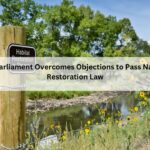In a bid to protect public health and the environment, the U.S. Environmental Protection Agency (EPA) has undertaken a comprehensive quantitative analysis of the risks associated with asbestos exposure. This evaluation, conducted under the Toxic Substances Control Act (TSCA), aims to shed light on the dangers posed by asbestos, with a particular focus on chrysotile, the most used form of asbestos in the United States. In this blog post, we delve into the key findings of the EPA’s Risk Evaluation for Asbestos: Part 2 and how it impacts both industry and individuals. We’ll also explore how organizations like Compliancexl are assisting in managing asbestos exposure risks.
Common Usage of Asbestos in the United States
Chrysotile, a type of asbestos, is prevalent in various industries across the United States, especially in manufacturing, processing, and distribution. Its primary application lies within the chlor-alkali industry. However, the EPA’s Risk Evaluation for Asbestos reveals alarming findings: asbestos poses unreasonable risks to workers, occupational non-users, consumers, and bystanders due to the chemicals it contains, impacting both human health and the environment.
Understanding the EPA’s Assessment
The EPA’s assessment is a two-part endeavour. Part 1 scrutinized 32 different conditions of asbestos use, providing crucial insights into its risks. To ensure safety, users are strongly advised to adhere to safety data sheets and labels when handling asbestos-containing products. In Part 2, the EPA widened its scope to include various asbestos types such as chrysotile (serpentine), crocidolite (riebeckite), amosite (cummingtonite-grunerite), anthophyllite, tremolite, actinolite, and Libby Amphibole Asbestos, along with its constituents. The goal is to establish regulations and rules under TSCA 6(a) to eliminate these unreasonable risks.
The Impact on Health and Safety
The risks associated with asbestos are far-reaching, contributing to severe health issues like lung cancer, mesothelioma, and asbestosis. By taking proactive measures to eliminate these unreasonable risks, the EPA aims to safeguard the health and well-being of individuals who may come into contact with asbestos-containing materials.
EPA’s Commitment to Public Engagement
To ensure a transparent and inclusive process, the EPA has released a white paper on Risk Evaluation for Asbestos: Part 2. Furthermore, a draft will be made available for public comment later this year. The EPA values feedback, comments, and suggestions from the public and relevant stakeholders, which will be considered in the finalization of actions and rules to mitigate the risks associated with asbestos use and disposal.
Amid these developments, Compliancexl stands ready to assist organizations in recognizing the health and safety risks associated with asbestos while aiding their efforts to comply with regulatory requirements. Our comprehensive services ensure that organizations understand and adhere to the regulations surrounding asbestos exposure.
In conclusion, understanding the risks associated with asbestos is of utmost importance. Through the EPA’s extensive Risk Evaluation for Asbestos, complemented by the expertise of Compliancexl, we can effectively mitigate these risks and prioritize the well-being of individuals and the environment.
FAQs :
1. What are the risks associated with ASBESTOS usage and disposal?
ASBESTOS pose unreasonable risks. Asbestosis, mesothelioma, and lung cancer are among them.
2. To reduce risks, what steps have been taken?
The Environmental Protection Agency will propose rules to reduce the use of chemicals or substitute alternatives for ASBESTOS.





